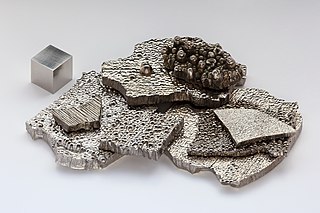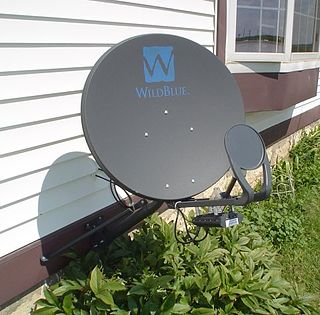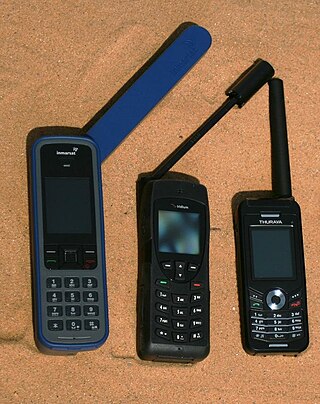
Iridium is a chemical element; it has symbol Ir and atomic number 77. A very hard, brittle, silvery-white transition metal of the platinum group, it is considered the second-densest naturally occurring metal with a density of 22.56 g/cm3 (0.815 lb/cu in) as defined by experimental X-ray crystallography. It is one of the most corrosion-resistant metals, even at temperatures as high as 2,000 °C (3,630 °F). However, corrosion-resistance is not quantifiable in absolute terms; although only certain molten salts and halogens are corrosive to solid iridium, finely divided iridium dust is much more reactive and can be flammable, whereas gold dust is not flammable but can be attacked by substances that iridium resists, such as aqua regia.

Meitnerium is a synthetic chemical element; it has symbol Mt and atomic number 109. It is an extremely radioactive synthetic element. The most stable known isotope, meitnerium-278, has a half-life of 4.5 seconds, although the unconfirmed meitnerium-282 may have a longer half-life of 67 seconds. The GSI Helmholtz Centre for Heavy Ion Research near Darmstadt, Germany, first created this element in 1982. It is named after Lise Meitner.
Protium or hydrogen-1 is the most common isotope of the element hydrogen, with one proton, one electron, and no neutrons.
Iridium Communications Inc. is a publicly traded American company headquartered in McLean, Virginia, United States. Iridium operates the Iridium satellite constellation, a system of 75 satellites: 66 are active satellites and the remaining nine function as in-orbit spares. Iridium Satellites are used for worldwide voice and data communication from handheld satellite phones, satellite messenger communication devices and integrated transceivers, as well as for two-way satellite messaging service from supported Android smartphones. The nearly polar orbit and communication between satellites via inter-satellite links provide global service availability.
A period 6 element is one of the chemical elements in the sixth row (or period) of the periodic table of the chemical elements, including the lanthanides. The periodic table is laid out in rows to illustrate recurring (periodic) trends in the chemical behaviour of the elements as their atomic number increases: a new row is begun when chemical behaviour begins to repeat, meaning that elements with similar behaviour fall into the same vertical columns. The sixth period contains 32 elements, tied for the most with period 7, beginning with caesium and ending with radon. Lead is currently the last stable element; all subsequent elements are radioactive. For bismuth, however, its only primordial isotope, 209Bi, has a half-life of more than 1019 years, over a billion times longer than the current age of the universe. As a rule, period 6 elements fill their 6s shells first, then their 4f, 5d, and 6p shells, in that order; however, there are exceptions, such as gold.

Group 9, by modern IUPAC numbering, is a group (column) of chemical elements in the d-block of the periodic table. Members of Group 9 include cobalt (Co), rhodium (Rh), iridium (Ir) and meitnerium (Mt). These elements are among the rarest of the transition metals.
The Ka band is a portion of the microwave part of the electromagnetic spectrum defined as frequencies in the range 26.5–40 gigahertz (GHz), i.e. wavelengths from slightly over one centimeter down to 7.5 millimeters. The band is called Ka, short for "K-above" because it is the upper part of the original NATO K band, which was split into three bands because of the presence of the atmospheric water vapor resonance peak at 22.24 GHz (1.35 cm), which made the center unusable for long range transmission. The 30/20 GHz band is used in communications satellite uplinks in either the 27.5 GHz and 31 GHz bands, and high-resolution, close-range targeting radars aboard military airplanes. Some frequencies in this radio band are used for vehicle speed detection by law enforcement. The Kepler Mission used this frequency range to downlink the scientific data collected by the space telescope.

A satellite telephone, satellite phone or satphone is a type of mobile phone that connects to other phones or the telephone network by radio link through satellites orbiting the Earth instead of terrestrial cell sites, as cellphones do. Therefore, they can work in most geographic locations on the Earth's surface, as long as open sky and the line-of-sight between the phone and the satellite are provided. Depending on the architecture of a particular system, coverage may include the entire Earth or only specific regions. Satellite phones provide similar functionality to terrestrial mobile telephones; voice calling, text messaging, and low-bandwidth Internet access are supported through most systems. The advantage of a satellite phone is that it can be used in such regions where local terrestrial communication infrastructures, such as landline and cellular networks, are not available.

Satellite Internet access or Satellite Broadband is Internet access provided through communication satellites. Modern consumer grade satellite Internet service is typically provided to individual users through geostationary satellites that can offer relatively high data speeds, with newer satellites using Ku band to achieve downstream data speeds up to 506 Mbit/s. In addition, new satellite internet constellations are being developed in low-earth orbit to enable low-latency internet access from space.
Cygnus is the Latin word for swan and may refer to:

Satellite flare, also known as satellite glint, is a satellite pass visible to the naked eye as a brief, bright "flare". It is caused by the reflection toward the Earth below of sunlight incident on satellite surfaces such as solar panels and antennas. Streaks from satellite flare are a form of light pollution that can negatively affect ground-based astronomy, stargazing, and indigenous people.
Iron is a chemical element with symbol Fe and atomic number 26.
Lithium is a chemical element with symbol Li and atomic number 3.

The Iridium satellite constellation provides L band voice and data information coverage to satellite phones, satellite messenger communication devices and integrated transceivers, as well as two-way satellite messaging service to supported Android smartphones, over the entire surface of Earth. Iridium Communications owns and operates the constellation, additionally selling equipment and access to its services. It was conceived by Bary Bertiger, Raymond J. Leopold and Ken Peterson in late 1987 and then developed by Motorola on a fixed-price contract from July 29, 1993, to November 1, 1998, when the system became operational and commercially available.
Super Heavy or Superheavy or variant, may refer to:

Iridium 77 was a communications Satellite which was part of a satellite constellation known as Iridium, named after the 77th chemical element of the periodic table, iridium. It was owned and funded by Iridium, a communications company.

Mobile-satellite service is – according to Article 1.25 of the International Telecommunication Union's Radio Regulations – "A radiocommunication service








